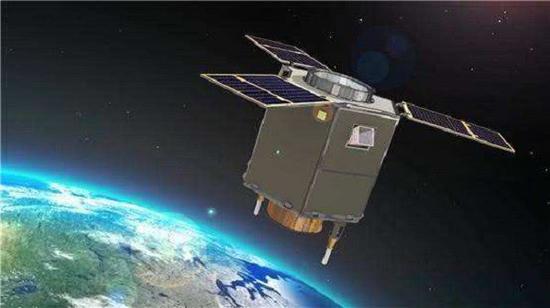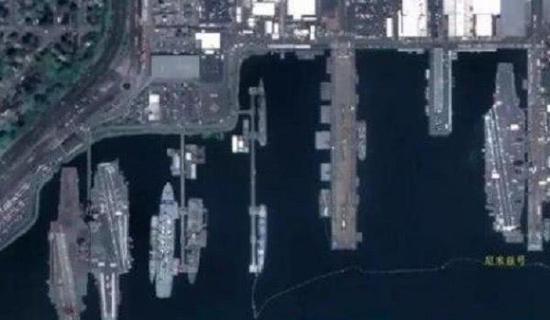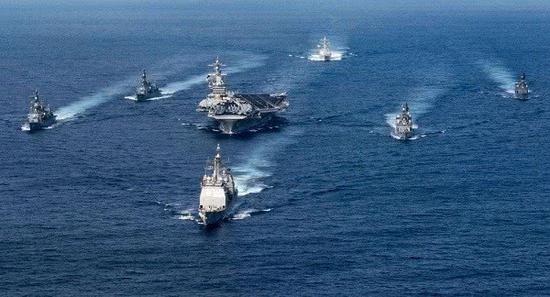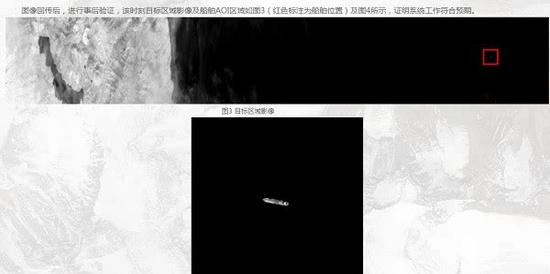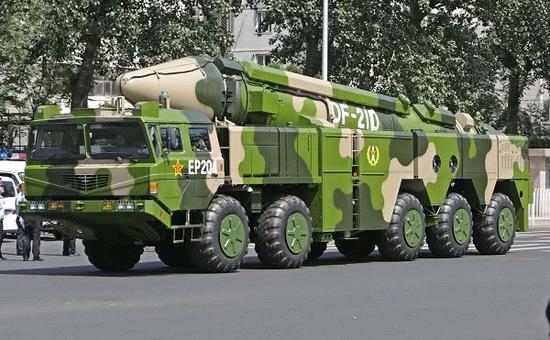AI Satellites revealed, auto recognition + tracking of Warships, make sinking aircraft carriers an automated piece of cake jobs. Push button and count bodies!
https://mil.news.sina.com.cn/jssd/2019-06-02/doc-ihvhiqay3139438.shtml
中国卫星实现大型船舶智能识别 可助弹道导弹反航母
中国卫星实现大型船舶智能识别 可助弹道导弹反航母
78
采用智能目标识别技术的长光吉林一号卫星
近日长光卫星技术公司宣布国产卫星在轨智能识别系统取得长足进展,已经完成对海上大型船舶智能识别,标志着国产卫星海面目标搜索、救援能力取得了历史性突破。
众所周知,传统卫星可以发现目标,但是不能识别目标,只能把相关信息发送给地面人员进行辨识。地面人员接收信息之后再进行识别,然后根据目标性质分发给相应的部门,整个过程需要数个小时甚至数天时间,非常容易贻误时机,例如搜索救援工作,需要第一时间告警,让搜索队伍以最快速度抵达现场,这样场合就需要卫星在轨智能识别系统。
传统卫星图像需要地面人面辨读才能识别目标
卫星在轨智能识别系统通过提高卫星自身的数据处理能力,引入人工智能技术,对拍摄到的图像进行自主处理和识别,从而获取目标性质、位置等信息。它的优点就是不再需要把信息发送给地面处理中心,依赖地面人员进行分辨读,相应就也不用把信息分发给相应用户,卫星根据目标性质就能把信息分发给相应的用户。用户只需要有一个手机,在里面安装一个APP,就能够知道接收到目标详细信息,包括成像时刻、目标属性、坐标位置、运动方向等等。节省了大量的时间,有利于快速反应,应付突发事件。
美国航母编队具备较强机动能力,对于信息处理实时性要求较高
长光吉林一号卫星智能化处理后的卫星图像
从长光卫星透露的信息来看,他们通过积累卫星目标数据库,结合卫星轨道姿态数据,成功开发了在轨智能目标识别系统。目前已经发展了两代,第一代采用多DSP模式识别技术,它通过对目标特征对比,确认目标。这个技术已经运用到长光吉林一号01、02号卫星上面,通过了实际运用验证,先后进行了某地森林火灾、海上船舶目标定位等实际运用验证,从相关资料来看,卫星开机数分钟之后,就获取了水面目标信息,然后相关信息传递给地面用户,取得了较好的效果。长光卫星还在研制第二代卫星在轨智能识别系统,它采用CPU和AI技术,处理能力更强,识别效果更好。它将运用到长光吉林一号03卫星上面,长光卫星表示未来将会组建智能化遥感卫星星座,为国内海事管理、应急救援等部门提供更加有力的支撑。从这里我们可以清楚看到,通过长光吉林一号智能卫星星座,我们能够对海上目标进行更加精确识别和监控,从而提高相关单位海洋管理能力。
东风21D又增加一双锐利的神眼
需要指出的是民用部门的海上控制系统也可以作为军用目标探测与指示系统来运用,两者技术在很大程度也是相通的,因此长光吉林一号智能卫星星座建立也表明中国已经掌握海上目标智能探测与识别技术,能够更加有效探测、跟踪、识别海上目标。尤其是大型水面编队,这种目标机动能力强,可以在广阔海域进行大范围机动,凭借一般探测系统很难保持连续探测与跟踪,相应对它打击也非常困难。现在国产卫星具备在轨智能处理能力之后,能够对目标进行近实时探测和识别,节省了大量时间,可以为火力单位提供更加有效的火力指标,增强了打击目标的能力。
可以想像一下,未来国产反舰弹道导弹部队配备卫星在轨智能处理终端之后,能够直接、实时接收大型水面编队位置,在卫星发现目标之后立刻就可以发起攻击,大大提高火力打击及时性和有效性。(作者署名:小飞猪观察)
Chinese satellite realizes intelligent identification of large ships, can help ballistic missile anti-aircraft carrier
Chinese satellite realizes intelligent identification of large ships, can help ballistic missile anti-aircraft carrier
78
Changguang Jilin No. 1 satellite using intelligent target recognition technology, Changguang Jilin No. 1 satellite using intelligent target recognition technology
Recently, Changguang Satellite Technology Co., Ltd. announced that the domestic satellite on-orbit intelligent identification system has made great progress, and has completed the intelligent identification of large-scale ships at sea, marking a historic breakthrough in the search and rescue capabilities of domestic satellites.
It is well known that traditional satellites can find targets, but they cannot identify targets, and can only send relevant information to ground personnel for identification. Ground personnel receive the information and then identify it, and then distribute it to the corresponding department according to the nature of the target. The whole process takes hours or even days. It is very easy to delay the opportunity. For example, search and rescue work requires the first time to alert the search team. Arriving at the fastest speed, in this case, the satellite on-orbit intelligent identification system is needed.
Traditional satellite imagery requires ground face recognition to identify the target. Traditional satellite imagery requires ground face recognition to identify the target.
The satellite on-orbit intelligent identification system introduces artificial intelligence technology by improving the data processing capability of the satellite itself, and autonomously processes and recognizes the captured images to obtain information such as the nature and location of the target. Its advantage is that it no longer needs to send information to the ground processing center, relying on the ground personnel to distinguish and read, and correspondingly, it does not need to distribute the information to the corresponding users. The satellite can distribute the information to the corresponding users according to the target nature. The user only needs to have a mobile phone, and after installing an APP, it can know the detailed information of the target, including imaging time, target attribute, coordinate position, motion direction and so on. Save a lot of time, help to react quickly and cope with unexpected events.
The US aircraft carrier formation has strong maneuverability, and the real-time requirements for information processing are high. The US aircraft carrier formation has strong maneuverability and requires high real-time information processing.
The satellite image of the Changguang Jilin No. 1 satellite intelligently processed satellite image Changguang Jilin No.1 satellite intelligently processed
From the information revealed by Changguang Satellite, they successfully developed an on-orbit intelligent target recognition system by accumulating satellite target database and combining satellite orbital attitude data. Two generations have been developed. The first generation uses multi-DSP pattern recognition technology, which confirms the target by comparing the target features. This technology has been applied to Changguang Jilin No. 1 and No. 02 satellites. Through the actual application verification, it has carried out the actual application verification of forest fires and sea ship target positioning in some places. From the relevant information, the satellite is turned on for several minutes. After that, the water surface target information is obtained, and then the relevant information is transmitted to the ground user, and a good effect is obtained. Changguang Satellite is also developing a second-generation satellite on-orbit intelligent identification system, which uses CPU and AI technology, which has stronger processing capability and better recognition effect. It will be applied to the Changguang Jilin No.1 03 satellite. Changguang Satellite said that it will set up an intelligent remote sensing satellite constellation in the future, providing more powerful support for domestic maritime management, emergency rescue and other departments. From here we can clearly see that through the Changguang Jilin No. 1 intelligent satellite constellation, we can more accurately identify and monitor the maritime targets, thereby improving the marine management capabilities of the relevant units.
Dongfeng 21D adds a pair of sharp eyes to the east wind 21D and adds a pair of sharp eyes
It should be pointed out that the civil control system of the civil sector can also be used as a military target detection and indication system. The two technologies are also largely connected. Therefore, the establishment of the Changguang Jilin No. 1 intelligent satellite constellation also indicates that China has mastered the maritime targets. Intelligent detection and recognition technology can more effectively detect, track and identify maritime targets. Especially for large-scale surface formations, this kind of target has strong maneuverability and can be used for large-scale maneuvers in the vast sea area. It is difficult to maintain continuous detection and tracking by the general detection system, and it is very difficult to strike it accordingly. Nowadays, the domestic satellites have the on-orbit intelligent processing capability, which can detect and identify the target in near real time, save a lot of time, provide more effective firepower indicators for the firepower unit, and enhance the ability to hit the target.
It can be imagined that in the future, the domestic anti-ship ballistic missile unit will be able to directly and in real time receive large-scale surface formation positions after being equipped with satellite on-orbit intelligent processing terminals, and can launch attacks immediately after the satellites find targets, greatly improving the timeliness and effectiveness of firepower strikes. . (Author's signature: Xiaofei pig observation)




